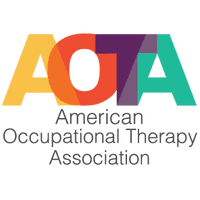What Is Co-Regulation—And Why Does It Matter for Your Child’s Development?
Lily Baiser, MS, OTR/L

When your child is struggling—melting down, withdrawing, or spiraling into big emotions—you’ve probably been told they need to “self-regulate.” But here’s the truth: self-regulation doesn’t happen in isolation. It’s built through connection. And it begins with you.
That’s where co-regulation comes in.
What Is Co-Regulation?
Co-regulation is a neuro-relational process that happens when two or more people connect in a way that brings their nervous systems into sync. It’s not just emotional support—it’s a biological response. When your brain senses safety in another person (through calm tone, warm eye contact, relaxed posture, or soft facial expressions), it adjusts your arousal level to match.
This is how babies calm down in a parent’s arms. It’s how toddlers settle when you gently hum or rock them. And it’s how children—and even teens—learn to manage big feelings: through safe, consistent connection with a regulated adult.
Why Co-Regulation Matters (Especially for Kids With Developmental Differences)
Children with developmental delays, sensory sensitivities, ADHD, or autism are more vulnerable to emotional dysregulation. Their brains may spend more time in fight, flight, or freeze—and have a harder time accessing the “thinking brain” needed to problem-solve or soothe themselves.
That’s where a co-regulating parent or caregiver becomes essential.
When you stay calm, grounded, and present—even during your child’s hardest moments—you’re not just helping them feel better in the moment. You’re teaching their brain how to regulate. You’re building trust, strengthening your relationship, and helping them grow neural pathways for long-term resilience.
As Bonnie Badenoch writes, “A calmly beating heart and relaxed yet engaged animate face signals our readiness to engage. This calm, safe state rests at the foundation of all interpersonal connectedness.”
In simpler terms: your presence is powerful. It can quite literally change your child’s brain.
What Co-Regulation Looks Like In Daily Life
Here are some examples of co-regulation in action:
A parent holds steady eye contact and speaks softly while their child cries over a toy conflict.
A caregiver uses a rhythmic voice and gentle touch during a bedtime meltdown.
A parent creates a predictable after-school routine to help their sensory-sensitive child decompress.
A father kneels down to his daughter’s level, mirrors her body language, and validates her frustration before helping her problem-solve.
These moments aren’t just about behavior—they’re about connection. They help a child feel seen, safe, and supported.
How Kinspire Helps Foster Co-Regulation
At Kinspire, co-regulation is foundational to everything we do.
We don’t just hand you strategies—we help you become a more confident, grounded, and effective co-regulator for your child. Through daily therapist support, real-time guidance, and custom tools, we help you:
We IDENTIFY
We assess your child’s sensory profile, emotional regulation skills, and daily routines to understand what’s causing dysregulation.
We DESIGN
We co-create calming routines, visual supports, emotional scripts, and environmental strategies to foster co-regulation.
We IMPLEMENT
We walk alongside you—step by step—as you build these tools into real life. Our therapists support you in the moment when your child is dysregulated, helping you stay grounded and effective.
We OPTIMIZE
As your child grows and new challenges arise, we adjust. We help you refine routines, strengthen your co-regulation skills, and respond to your child’s changing needs.
Because parenting is a journey—and you deserve support every step of the way.
Ready to Feel More Confident Supporting Your Child?
Co-regulation isn’t something you have to figure out alone. With Kinspire, you’ll gain a trusted partner who understands the neuroscience of regulation, gets to know your family, and gives you the tools to stay calm, connected, and in control—even during life’s hardest moments.
👉 Book a free consultation with a licensed OT
Let’s build regulation through relationship—together.




